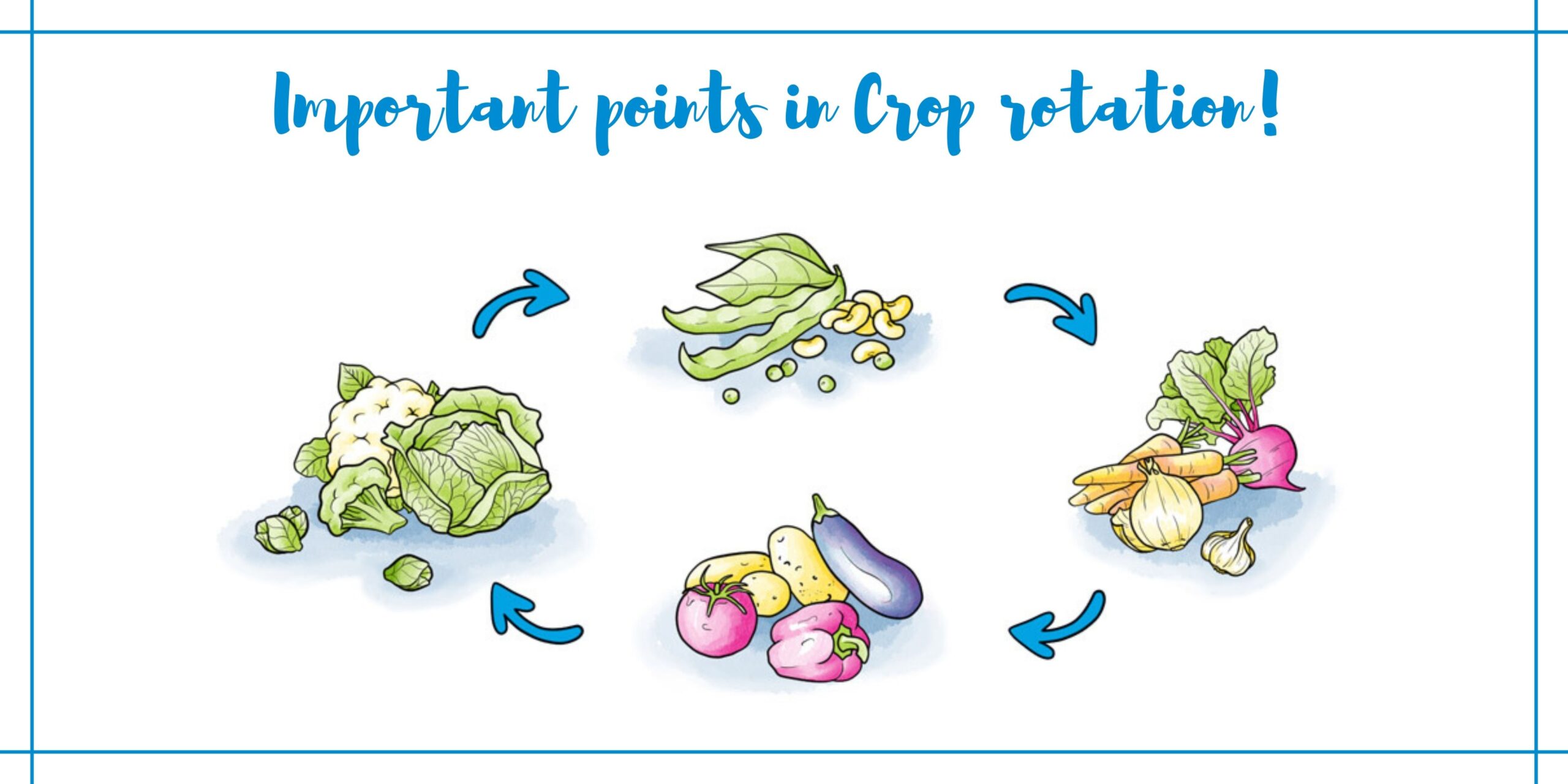
Important points in Crop rotation!
The advantages of crop rotation, together with its types and examples, are elucidated meticulously in this post. Crop rotation can assist you in managing your soil and fertility, reduce erosion, improve the health of your soil, and increase the nutrients available to crops. Crop rotations must incorporate crops that provide adequate cover and root development to prevent erosion and improve soil health. How much is it? This approach is relatively inexpensive to execute, and economic benefits include decreased fertiliser and pesticide inputs. A successful rotation begins with planning, and hay or cover crop rotations benefit the soil. Multiple crops in a rotation disrupt the cycles of weeds, insects, and diseases, and rotations generate healthy, productive crops. Processes are scheduled to create a residual cover that will aid in erosion management and moisture conservation. Additionally, hay or cover crop rotations can help reduce hazardous chemical fertiliser and pesticide inputs. Farmers used crop rotation in the early years but had no concept of the scientific reasons for the method’s success, nor did they have a title for the practice. This suggests they were unaware of the environmental impact.
Crop rotation Planning
Planning Crop Rotation Consider the following steps: determining soil erosion, nutrient deficiency, and soil health concerns. Conduct soil pH, organic matter, and nutrient tests every 1-3 years. Adjust pH and nutrient levels according to soil test recommendations for optimal crop yields and quality. Determine the nutritional requirements for fertiliser, manure, or compost. Crops/varieties should be chosen to address erosion, soil health, nutrient problems, and other producer goals. Evaluate and change the crop sequence as necessary in response to recognised concerns, as well as attend essential training for the crop, soil, and insect scouting. Evaluate cover crop requirements and clean field equipment between fields. Clean the equipment with water and physically remove soil and plant residue. The advantages of crop rotation entail minimising the use of fertiliser and insecticides. Crop rotation practice includes plotting crops by year on a map for the duration of the process. Plan the operation’s rotation so that each crop receives about an equal area each year. When the ground is left barren for a season of grazing, animals might be included in crop rotation.
Crop rotation Maintenance
Crop rotation management entails the following steps: periodic soil testing every 1-3 years initially, and then every 3-5 years after that. Crop and pest scouting and cropping sequence evaluation for income demands and soil problems are performed annually. Sprayers, planters, and fertiliser applicators are calibrated to ensure that specified rates are applied, uniform distributions are established, and seeding depths are consistent. Controlling erosion and sedimentation is one of the advantages of crop rotation. Additionally, it aids in other soil activities, including water infiltration and aeration, which provide several benefits to crops and improve the soil’s composition. However, it depends entirely on the type of crop rotation, like cover crops that suppress weed growth and prevent tillage damage to the soil structure. Crop rotation is a time-honoured agricultural strategy that farmers have utilised since the Ages. Crop rotation is described as the deliberate cultivation of various crops in proper sequence in distinct farm regions and at different seasons. Moreover, it means not planting anything at all during a particular season and allowing the soil to regenerate whilst bare till the following season.
Benefits of crop rotation
According to agriculturists and agronomists, crop rotation has a plethora of benefits, as it contributes to soil fertility and crop productivity. Let’s have a look at a few of them in this area: Crop rotation is the solution if you are experiencing low yields, soil compaction, soil erosion, water stress, soil that is either too wet or too dry for crops, cloddy soil, or soil crusting. The advantages of crop rotation involve recycling soil nutrients used by plants. It comprises optimising labour allocation throughout the cropping period by utilising a wide range of crops, growing dates, and yield times, boosting water availability to plants, minimising soil crusting, enhancing the soil’s strength and durability, enhancing crop yields, and putting more cash on hand. Crop rotation also benefits the environment by reducing soil loss, nutrient and pesticide pollution of streams and well water, enhancing crop germination, growth, and quality, mitigating economic danger associated with many crops, and improving air purity. Crop rotation is necessary for successful organic farming since it is such an effective strategy for solving various problems.